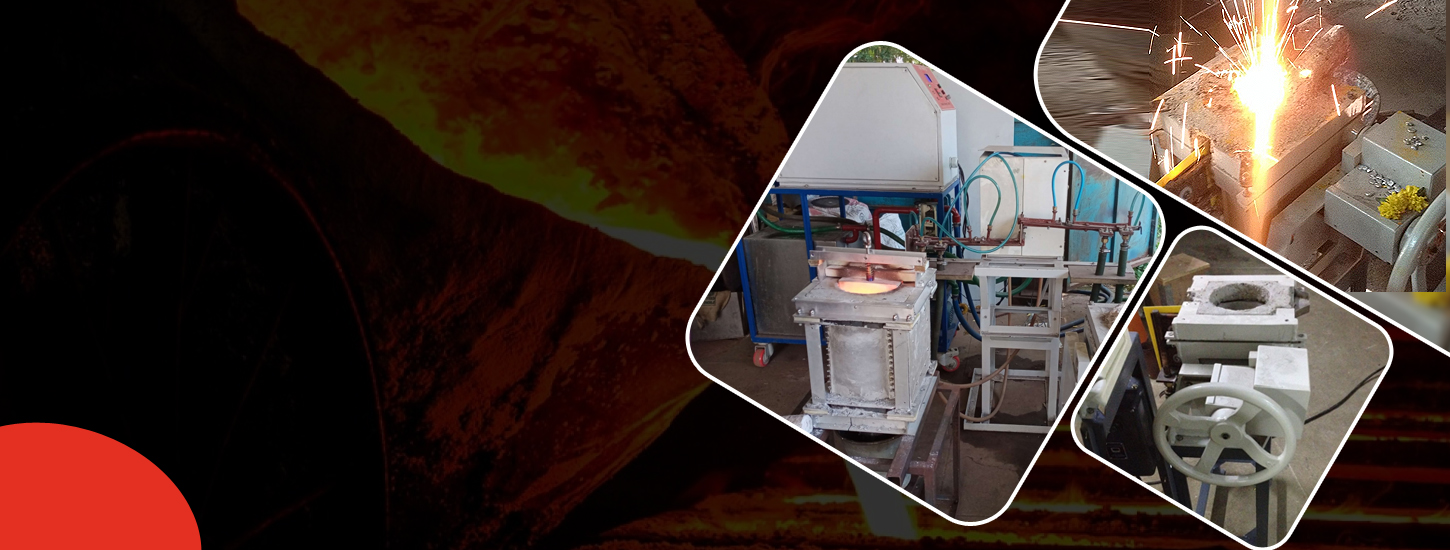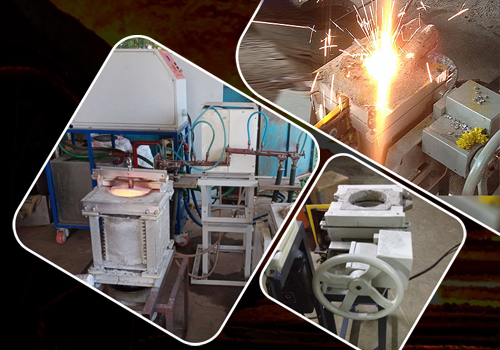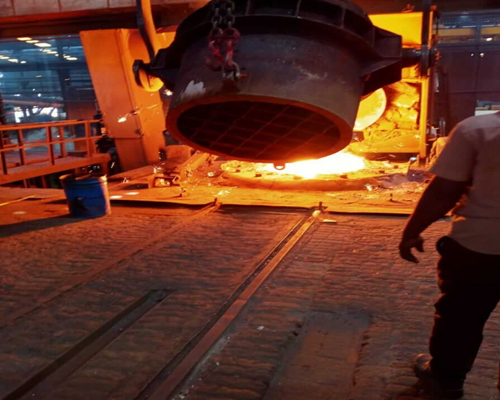Induction Furnace and Steelmaking
Induction furnace is a type of furnace for steelmaking which uses electrical energy for its operation. Induction furnace (IF) steelmaking is one of the two electrical steelmaking processes. The other process for electrical steelmaking uses an electric arc furnace (EAF). Though IFs are being used since a long time, the production of mild steel by the IF is relatively not very old phenomenon.
The principle of melting in IF is that a high voltage electrical source from a primary coil induces a low voltage, high current in the metal or secondary coil. IF uses the heat produced by the eddy currents generated by a high frequency alternating field. The alternating magnetic field produced by the high frequency current induces powerful eddy currents in the charge resulting in very fast heating.
A Furnace erection is a furnace that heats material by means of an electric arc.
Industrial arc furnaces range in size from small units of approximately one-tonne capacity (used in foundries for producing cast iron products) up to about 400-tonne units used for secondary steelmaking. Arc furnaces used in research laboratories and by dentists may have a capacity of only a few dozen grams. Industrial electric arc furnace temperatures can reach 1,800 °C (3,300 °F), while laboratory units can exceed 3,000 °C (5,400 °F).
In electric arc furnaces, the charged material (the material entered into the furnace for heating, not to be confused with electric charge) is directly exposed to an electric arc, and the current from the furnace terminals passes through the charged material. Arc furnaces differ from induction furnaces, in which the charge is heated instead by eddy currents. Electrical steel is a specific grade of steel made with silicon for electrical applications; the name is unrelated to the arc furnace or use of electricity in production.
Use of induction furnace Erection
Induction furnaces are used in foundries to melt iron, steel, copper, aluminum, and precious metals to name a few. Once melted, the metal is poured from the induction furnace into a mold. Once the metal has solidified, it is removed from the mold.
History of Induction Furnace Erection
Stassano furnace exhibited at the Museo della Scienza e della Tecnologia “Leonardo da Vinci”, Milan
In the 19th century, a number of people had employed an electric arc to melt iron. Sir Humphry Davy conducted an experimental demonstration in 1810; welding was investigated by Pepys in 1815; Pinchon attempted to create an electrothermic furnace in 1853; and, in 1878–79, Sir William Siemens took out patents for electric furnaces of the arc type.
The first successful and operational furnace was invented by James Burgess Readman in Edinburgh, Scotland in 1888 and patented in 1889. This was specifically for the creation of phosphorus.
Further electric arc furnaces were developed by Paul Héroult, of France, with a commercial plant established in the United States in 1907. The Sanderson brothers formed The Sanderson Brothers Steel Co. in Syracuse, New York, installing the first electric arc furnace in the U.S. This furnace is now on display at Station Square, Pittsburgh, Pennsylvania.
A schematic cross section through a Heroult arc furnace. E is an electrode (only one shown), raised and lowered by the rack and pinion drive R and S. The interior is lined with refractory brick H, and K denotes the bottom lining. A door at A allows access to the interior. The furnace shell rests on rockers to allow it to be tilted for tapping.
Initially “electric steel” was a specialty product for such uses as machine tools and spring steel. Arc furnaces were also used to prepare calcium carbide for use in carbide lamps. The Stassano electric furnace is an arc type furnace that usually rotates to mix the bath. The Girod furnace is similar to the Héroult furnace.
While EAFs were widely used in World War II for production of alloy steels, it was only later that electric steelmaking began to expand. The low capital cost for a mini-mill—around US$140–200 per ton of annual installed capacity, compared with US$1,000 per ton of annual installed capacity for an integrated steel mill—allowed mills to be quickly established in war-ravaged Europe, and also allowed them to successfully compete with the big United States steelmakers, such as Bethlehem Steel and U.S. Steel, for low-cost, carbon steel “long products” (structural steel, rod and bar, wire, and fasteners) in the market.
For More Visit Us on Google Maps






